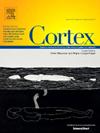Pleasant touch: Behavioural and hemodynamic responses to a protocol for systematic assessment of tactile stimulation
IF 3.2
2区 心理学
Q1 BEHAVIORAL SCIENCES
引用次数: 0
Abstract
Pleasant touch is a form of tactile stimulation mediated by tactile C afferent fibres. It involves the encoding of the emotional value associated with tactile stimulation and subserves important social functions. Although pleasant touch has gathered increased interest in recent years, no protocol has been proposed to assess it with a robust and reliable method. In the present study we adopted a rigorous protocol for evaluating the pleasantness or unpleasantness of 9 tactile (pleasant, unpleasant, or neutral) stimuli delivered on eight body areas in healthy individuals. We recorded participants' ratings on pleasantness and intensity of the stimulus, as well as their activity in the prefrontal cortex (PFC) by functional near-infrared spectroscopy (fNIRS). A questionnaire evaluated participants' subjective experience of touch in everyday life. The behavioural results confirmed the effectiveness of the protocol as the stimuli selected to evoke pleasantness were perceived as significantly more pleasant than unpleasant and neutral ones, whereas unpleasant stimuli were perceived as more intense than all other stimuli. The participants reported the palm of the hand, particularly the left one, as the most sensitive area to tactile stimulation. Judgements of pleasantness were positively correlated with subjective experience of touch in everyday life. fNIRS data showed increased activity in the prefrontal cortex particularly during stimulation with pleasant and unpleasant stimuli, consistent with behavioural findings. Overall, this study contributes to understand the processing of pleasant touch and its neural correlates, while introducing a rigorous protocol for investigating tactile stimulation. This protocol holds promise for future utilisation in both healthy and clinical populations.
愉快的触摸:对触觉刺激系统评估方案的行为和血流动力学反应
愉悦的触觉是一种由触觉C传入纤维介导的触觉刺激。它涉及与触觉刺激相关的情感价值编码,并具有重要的社会功能。尽管近年来人们对愉快的触摸越来越感兴趣,但还没有提出一种可靠的方法来评估它。在本研究中,我们采用了一种严格的方案来评估健康个体在8个身体区域上传递的9种触觉刺激(愉快、不愉快或中性)的愉快或不愉快。我们用功能性近红外光谱(fNIRS)记录了参与者对刺激的愉悦度和强度的评分,以及他们前额叶皮层(PFC)的活动。一份调查问卷评估了参与者在日常生活中对触摸的主观体验。行为结果证实了该方案的有效性,因为被选来唤起愉悦感的刺激被认为比不愉快和中性的刺激明显更愉快,而不愉快的刺激被认为比所有其他刺激都更强烈。参与者报告说,手掌,尤其是左手,是对触觉刺激最敏感的区域。愉悦性判断与日常生活中主观触觉体验呈正相关。近红外光谱(fNIRS)数据显示,前额叶皮层的活动增加,尤其是在受到愉快和不愉快刺激时,这与行为研究结果一致。总的来说,本研究有助于理解愉快触觉的加工及其神经相关,同时为研究触觉刺激引入了严格的协议。该协议有望在未来的健康和临床人群中使用。
本文章由计算机程序翻译,如有差异,请以英文原文为准。
求助全文
约1分钟内获得全文
求助全文
来源期刊

Cortex
医学-行为科学
CiteScore
7.00
自引率
5.60%
发文量
250
审稿时长
74 days
期刊介绍:
CORTEX is an international journal devoted to the study of cognition and of the relationship between the nervous system and mental processes, particularly as these are reflected in the behaviour of patients with acquired brain lesions, normal volunteers, children with typical and atypical development, and in the activation of brain regions and systems as recorded by functional neuroimaging techniques. It was founded in 1964 by Ennio De Renzi.
 求助内容:
求助内容: 应助结果提醒方式:
应助结果提醒方式:


